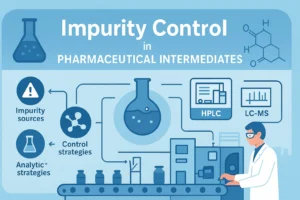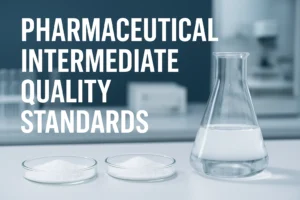Introduction to NMN and NAD
In the health and wellness space, NMN and NAD have become hot topics of discussion. Many people take supplements blindly without fully understanding their purposes and differences.
Today, we’ll explore the key distinctions, benefits, and applications of NMN and NAD to help you make an informed decision and choose the best product for your health.
What are NMN and NAD?
Let’s start with NMN, which has a pretty cool name—Nicotinamide Mononucleotide. You can think of it as NAD’s little sibling or its “younger version.” In nature, NMN is like a hidden gem, found in trace amounts in certain foods like broccoli and avocados. Although present in small quantities, it plays an important role.
NAD, on the other hand, is involved in many vital processes in the body, such as DNA repair, energy metabolism, and regulating gene expression. However, as the years go by, NAD levels gradually decline, much like a high-performance car that experiences wear and tear over time. As a result, the body’s energy levels drop, and the risk of developing age-related diseases increases.
This is where NMN steps in to play a crucial role. As a precursor to NAD, it acts like NAD’s “fountain of youth,” continuously replenishing and energizing NAD to ensure the body remains vibrant and youthful—like a car that stays in peak condition with consistent maintenance and upgrades!
Understanding the functions of NMN and NAD, as well as how they work together, highlights their significance in promoting overall health, vitality, and longevity.
The Chemical Structure of NMN and NAD
| NMN:A Key Building Block |
| Nicotinamide | A derivative of vitamin B3 (niacin) |
| Ribose | A sugar molecule |
| Phosphate Group | Attached to the ribose, giving NMN its mononucleotide structure. |
| NAD: The Multifunctional Coenzyme |
| Nicotinamide | Similar to NMN, this serves as the functional head. |
| Ribose Phosphate Backbone | Two ribose molecules connected by phosphate groups. |
| Adenine Base | Linked to one ribose, forming the adenine dinucleotide part. |
The chemical structures of NMN (Nicotinamide Mononucleotide) and NAD (Nicotinamide Adenine Dinucleotide) are intricately linked, as NMN serves as a direct precursor to NAD. Both molecules belong to the family of nicotinamide derivatives and are central to energy metabolism and cellular processes.
Key Functions of NMN and NAD in the Body
Both NMN and NAD are essential for maintaining optimal cellular health, energy production, and longevity. While their roles are closely related, each has unique functions that contribute to the body’s overall vitality.
| NMN: The Precursor for NAD Production |
| Boosts NAD Levels | NMN is a direct precursor to NAD, enabling the body to maintain adequate levels of this critical coenzyme. |
| Supports Energy Metabolism | By fueling NAD production, NMN helps convert nutrients into energy, which is vital for cellular function. |
| Enhances DNA Repair | NMN activates enzymes like PARPs (Poly ADP-ribose polymerases), which are involved in repairing damaged DNA. |
| NAD: The Energy and Repair Coenzyme |
Facilitates Cellular Energy Production | NAD+ plays a central role in metabolic pathways like glycolysis, the Krebs cycle, and oxidative phosphorylation, where it helps generate ATP—the body’s energy currency. |
| Activates Longevity Proteins | NAD+ is required for the activation of sirtuins, a family of proteins that regulate metabolism, inflammation, and aging. |
Promotes Cellular Repair | NAD+ supports critical repair processes, including maintaining mitochondrial health and combating oxidative stress. |
NMN vs NAD: What’s the Difference?
While NMN and NAD are closely connected in their biological roles, they serve different purposes in the body. Understanding these distinctions is crucial when considering their applications in health and wellness.
NMN vs NAD: Which One is More Effective for Anti-Aging?
Both NMN and NAD play pivotal roles in the anti-aging process; however, their mechanisms of action within the body and their practical effects differ significantly.
How NMN Supports Anti-Aging
- Boosts NAD Levels: NMN supplements directly promote NAD production, helping to restore the levels that decline with age.
- Enhances Mitochondrial Function: By accelerating NAD synthesis, NMN supports the “powerhouse” of cells—the mitochondria—improving energy metabolism and alleviating cellular fatigue.
- Aids DNA Repair: NMN activates key enzymes like PARP, which are essential for repairing damaged DNA and maintaining genome stability.
NAD’s Contributions to Anti-Aging
- Directly Participates in Cellular Repair: NAD is crucial for processes like DNA repair and mitigating oxidative stress, serving as a foundation for cellular health and longevity.
- Activates Longevity-Related Proteins: NAD is vital for activating the sirtuin family of proteins, which play key roles in regulating cellular aging, inflammatory responses, and metabolism.
- Ensures Energy Supply: As a critical coenzyme, NAD is directly involved in ATP synthesis, ensuring that cells receive sufficient energy to maintain optimal function.
Which is Better for Your Health: NMN or NAD?
When selecting NMN or NAD products, it’s essential to carefully consider your health goals, lifestyle, and the quality of the product. The following guide will help you make an informed decision:
Define Your Health Goals
- For Longevity and Ongoing Maintenance: If your goal is to gradually increase NAD levels to support long-term cellular health, NMN supplements are an ideal choice.
- For Immediate Results: If you need rapid cellular repair or energy replenishment, NAD products, especially those administered through professional IV therapy, might be more suitable.
Evaluate Product Quality
- Purity and Potency: Look for products that have been tested by third-party laboratories to ensure they contain the stated amount of active ingredients.
- Delivery Method: Consider different delivery formats such as capsules, powders, or IV infusions, and choose the one that best fits your needs. Typically, NMN is available as an oral supplement, while NAD may require specialized delivery methods to achieve maximum efficacy.
Consider Dosage and Formulation
- NMN: Choose products with an effective dosage based on your specific needs. A daily intake of 250-500 mg is generally recommended.
- NAD: For NAD supplements, ensure the dosage aligns with therapeutic recommendations. For those seeking quick effects, professional NAD IV therapy could be a good option.
Pay Attention to Additional Ingredients
- Some products may include complementary ingredients such as resveratrol or pterostilbene to enhance the effects of NMN or NAD. When purchasing, ensure these additives align with your health goals and avoid unnecessary fillers.
Assess Brand Reputation and Customer Feedback
- Research reputable brands with a proven track record of providing high-quality products. Read customer reviews and consult healthcare professionals to verify the credibility of the brand.
Conclusion
NMN and NAD play critical roles in supporting cellular health and combating the effects of aging. While NAD powers many essential processes within the body, NMN serves as its vital precursor, making both indispensable for maintaining vitality and longevity.
At [Tianming Pharmaceutical Group], we are committed to providing high-quality solutions to meet your health and pharmaceutical needs. We provide high quality NMN raw materials. Contact us today to explore our product range and take the first step toward a healthier, more vibrant life!
Email: sunqian0123@gmail.com
WhatsApp: +86 17663713557



